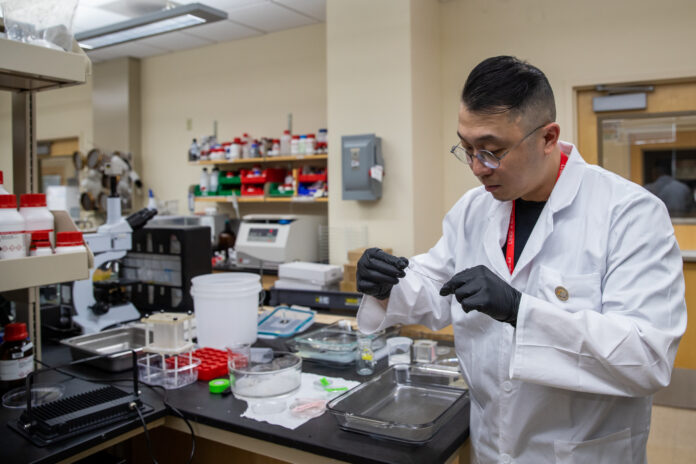
As a solution to the Las Vegas drought, UNLV’s Dr. Jeremy Cho is working on a patent for his team’s research on a device they created which captures water vapor from the atmosphere.
His research team, Da Kine Lab, looks into hydrogels and thermodynamics to trick water vapor in the atmosphere to become liquid, and thus become usable. Cho explained hydrogels as soft, plastic-like materials that absorb water. An example of a common object made of hydrogels is contact lenses.
Devices that can capture water from the atmosphere are not a new concept, but what makes Cho’s device different from others on the market is the incorporation of hydrogels. The goal of his device is that water can be harvested continuously and be incorporated into the architecture of existing buildings.
Cho was unable to speak too much on the specifics because the research detailing the device is under review to be published in scientific journals. He said that in a month there could be more developments in the research process.
The process for a patent to be approved takes years, as Cho recalled the four or five years that it took for his first patent to be approved. “In the meantime, the team will continue to deeply analyze the structures and properties of hydrogels,” said graduate student Yiwei Gao.
Once the patent is approved, Cho hopes that someday his research can be commercialized and potentially even create a startup.
The research could not have been done without the graduate and undergraduate students in Da Kine Lab. Closely working with Cho are Gao and Ryan Phung, a UNLV alumni and former Da Kine Lab member who still helps out with atmospheric water harvesting research. The actual research work involves designing experiments, building devices and troubleshooting.
Other research the lab does is in heat transfer, where the team researches more effective ways that energy can be used and converted.
Addison Cobb, an undergraduate student in the lab, heard about Da Kine Lab through another graduate student on the team. He said the tasks differ from day to day, but it’s awesome and he loves the variety.
According to the lab website, “da kine” is a Hawaiian phrase similar to “whatchamacallit” in English. It also denotes familiarity with both the speaker and the object in question.To keep up with Da Kine Lab’s research, their website can be found at https://dakine.sites.unlv.edu/. The lab is always accepting new members and interested students can reach out to Cho at his email jeremy.cho@unlv.edu.
